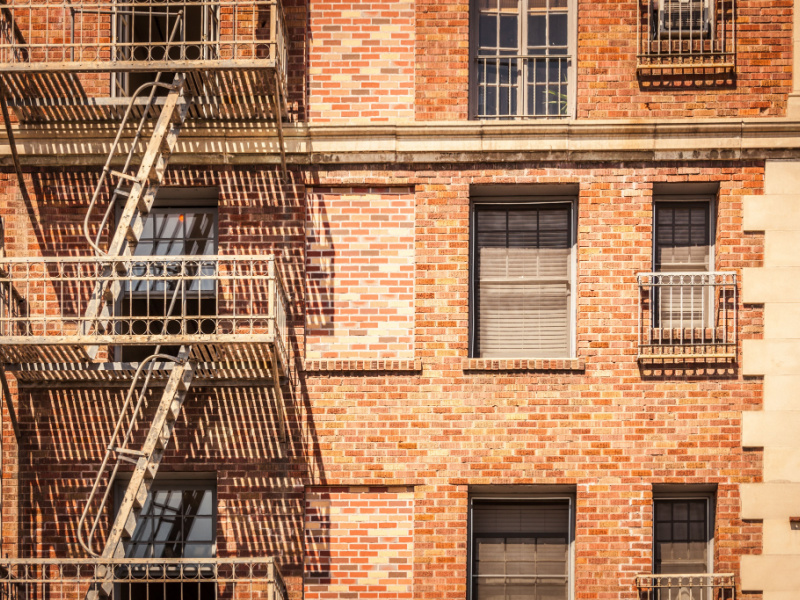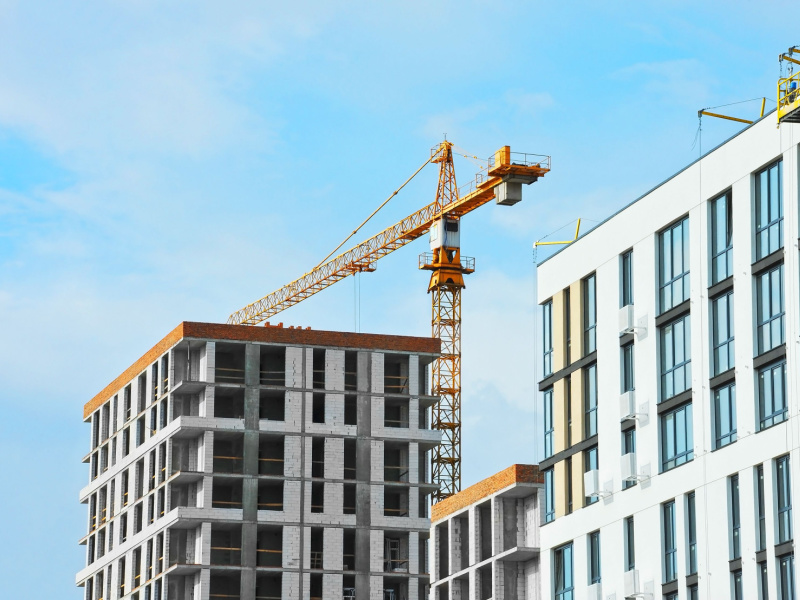Just How Crazy Is the Current Rental Market?
If your rent is skyrocketing, you're not alone. Here's why.

If your rent is skyrocketing, you're not alone. Here's why.

It’s not just you. The rent is too damn high.
Rents in the United States are between 25% and 50% higher than five years ago, according to the U.S. Office of Housing and Urban Development (HUD). Compared to 20 years ago, rents have more than doubled.
For millions of renters, this trend is nothing short of a crisis.
Today, more than a third of Americans are competing for a limited number of rentals. Many are stretching beyond their means to afford housing. Others are priced out altogether. (Renters made up 36% of 122.8 million American households as of 2019, the last year that reliable data on this was available. That’s the highest number of renters since the mid-1960s.)
What’s behind this state of affairs? Let’s take a deeper dive into what’s shaping today’s rental market.
Nationwide, the median rents for all sizes of apartments have increased 25% in the last five years. Median rents rose from $1,054 in 2017 to $1,322 in 2022, according to research by Statista.
And while just about everything has gotten more expensive amid historically high inflation, the cost of housing has risen much faster than the costs of other goods and services. Over the same period, the Consumer Price Index, a popular measure of inflation, increased only 16%.
But the nationwide average over the last five years doesn’t begin to tell the whole story.
Rents in some markets have ballooned at rates approaching double the national average. And we’re not just talking about the usual suspect cities of San Francisco and New York.
Using data from HUD, Lemonade examined median monthly rents in eight U.S. metro areas: Ann Arbor, MI; Austin, TX; Chattanooga, TN; Los Angeles; New York City; Ozark County, MO; Portland, ME and Tacoma, WA. The HUD data examines median rents up to Fiscal Year (FY) 2023 (which began on October 1, 2022).
| Metro Area | Median Rent FY 2023 | Median Rent FY 2018 | 5-Year Change ($) | 5-Year Change (%) |
|---|---|---|---|---|
| Ann Arbor, MI | $1,244 | $971 | $273 | 28% |
| Austin, TX | $1,483 | $1,104 | $379 | 34% |
| Chattanooga, TN | $1,001 | $701 | $300 | 43% |
| Los Angeles, CA | $1,925 | $1,388 | $537 | 39% |
| New York, NY | $2,323 | $1,696 | $627 | 37% |
| Ozark County, MO | $637 | $518 | $119 | 23% |
| Portland, ME | $1,563 | $1,108 | $455 | 41% |
| Tacoma, WA | $1,411 | $936 | $475 | 51% |
Rents in Chattanooga have increased 43% over 5 years. Where this author lives—Portland, Maine—rent has gone up 41%. And rent in Tacoma has increased a whopping 51% in the last 5 years.
Even more striking, rents have more than doubled over the past 20 years in every market except Ann Arbor, MI, where rent has climbed 84%. For comparison, the CPI increased 58% over the last 20 years. (In other words, it costs Americans, on average, 58% more to buy the same goods in 2022 as it did in 2002.)
And that’s not all the bad news.
In reality, things may be bleaker than the data shows. For one, averages are just that. Rents for desirable properties are likely rising faster than the median.
And, importantly, rental statistics only show us what all renters are paying in a given market. They do not capture what rents landlords are demanding for units on the active market. Local housing laws and lease terms may limit rent hikes for existing tenants. But in many cases, when an apartment becomes vacant, all bets are off. A landlord can often list the unit for as much as he thinks someone will pay.
The real estate brokerage Redfin found that the average rent of properties listed on its platform surpassed $2,000 for the first time in May 2022.
According to Redfin’s research, the nationwide median asking rent in 2022 is $2,002. That varies from a high of $4,008 in New York City to a low of $1,428 in Kansas City, MO.
Kansas City, it’s worth noting, is one of only three markets tracked by Redfin where median asking rent declined compared to 2021. Milwaukee, WI and Minneapolis, MN also saw declines in rents.

How much does someone need to earn to afford a $2,000 apartment?
The 28/36 rule is a commonly-used guideline for housing affordability.
According to the rule, when budgeting for an apartment, you should not spend more than 28% of your gross (pre-tax) monthly income on rent or a mortgage payment. The second part of the rule says that your housing payment and other monthly debt payments (car loans, student loans, etc.) should not be more than 36% of your gross income.
Plenty of people break this rule, of course. According to US Census Data, 46% of Americans spend more than 30% of their income on housing. That includes 23% who spend more than 50% of their income on housing. In certain cities, following the 28/36 rule may be impossible. But renter beware: The more you spend on housing, the less room in your budget for everything else, like saving for emergencies, a house of your own, or retirement.
If you want to follow the 28/36 rule, you would need to earn $7,143 a month (that’s $85,714 a year, or a bit over $41 an hour), to afford rent of $2,000 per month.
Meanwhile, the U.S. median household income was just $74,580 in 2022, according to the most recent data from the US Census Bureau. So, if you were to rent an average $2,000 apartment while making the median U.S. income, you’d be paying 36% of your income on housing alone. Remember, that’s as much as you should spend on housing plus all other debt combined, if you’re abiding by the 28/36 rule.
The situation is particularly acute in cities where rents have increased faster than the national average. While incomes tend to be higher in high cost-of-living regions, incomes have not kept pace with housing prices. The most favorable income-to-housing cost ratios tend to be in places where rents are more affordable, like the Midwest and the South.
A housing shortage, inflation, and the rise of remote work are all factors contributing to the rental crisis. Let’s take a look at each of these three causes.

In many parts of the United States, there simply aren’t enough places to live.
America is 3.8 million homes short of meeting housing demand, according to a study by Up for Growth. The shortage is affecting both rental housing and homes for sale. That means that, right now, there aren’t available homes for 3% of American households.
The housing shortage isn’t new, but it’s getting worse. Its roots go all the way back to the mortgage crisis and ensuing recession of 2008.
Before the crisis, lenders made it too easy for home buyers to get unaffordable mortgages. That fueled a boom in housing construction. Even as housing prices soared, it was easier to find a home and get approved for a mortgage (affordable or not).
New home construction still hasn’t returned to pre-recession levels. According to U.S. Census data, there was a peak of 1.7 million residential housing units starting construction in 2005. Ten years later, in 2015, there were only 715,000. That figure rose to 1.1 million in 2021 but is still 500,000 units short of the peak over 15 years ago.
In many cities, NIMBYism (a Not-In-My-Backyard mentality) also plays a role. High-density housing is the best solution to the housing shortage. It’s more affordable and better for the environment than single-family residences. And in populated areas where land is scarce, density may be the only option. The problem is that nobody—from Silicon Valley to Greenwich, Connecticut to Missoula, Montana—wants a new condo complex in their backyard.
Finally, the growth of the short-term rental industry through companies like Airbnb hasn’t helped. In some cities, landlords can make double or triple the monthly income by renting their properties on Airbnb rather than month-to-month.
A study by Carnegie Mellon University confirmed that Airbnb “mildly cannibalizes long-term rental supply.”
Inflation in the U.S. has been exploding since spring 2021, peaking recently at 9.1% in June 2022. This rising inflation comes following a two-decade period of inflation so low that some economists grew nervous.
Inflation doesn’t affect all goods equally. Fuel and healthcare costs may rise faster than the price of food, or vice versa. But it does tend to have a ripple effect throughout the economy.
If it costs more to fuel trucks, trains and ships, consumers will pay more at the store. Likewise, if it costs more to buy lumber and other building materials, the cost of a new housing unit is going to go up, too.
Landlords aren’t exempt. They are seeing higher costs to maintain properties and also in their personal lives. What are they going to do? Raise the rent, of course.
The coronavirus created another phenomenon that’s putting pressure on rents in some places. During the pandemic, millions fled big cities for smaller towns across the country. Some people fled out of fear. Others seized the opportunity to work from home and live wherever their hearts desired.
Pandemic migration has played a role in the housing shortage and rising rents in Maine, where I live. I’ve met more newcomers from all parts of the country in the past two years than I have in the past 20 years living here.
Nationwide, migration is affecting housing prices in the South and inland Western states the most.

It’s true: This is a crazy time for the rental market.
Renters are facing monthly rents that are as much as 50% higher as they were five years ago. In some markets, rents are as much as 30% higher than they were just last year. (Arguably, some rents may have gone down during the pandemic, and are now swooping back up to compensate.)
To add insult to injury, there is no shortage of prospective renters willing to pay more for desirable properties. Apartment hunters may have to compete with dozens of others to secure a lease. This means exhausting days of open-houses, on-the-spot offers and, in some cases, needing to offer more than asking rent.
We can hope that skyrocketing rent won’t be a forever problem. Economists are battling inflation by hiking interest rates. Home builders are ramping up new housing construction. And, slowly but surely, economic waves caused by the pandemic will recede into calmer waters.
Until then, good luck to all the renters out there. In the meantime, check out Lemonade’s tips for negotiating your rent—and, if you’re happy with your current place, you might think about staying awhile.
Please note: Lemonade articles and other editorial content are meant for educational purposes only, and should not be relied upon instead of professional legal, insurance or financial advice. The content of these educational articles does not alter the terms, conditions, exclusions, or limitations of policies issued by Lemonade, which differ according to your state of residence. While we regularly review previously published content to ensure it is accurate and up-to-date, there may be instances in which legal conditions or policy details have changed since publication. Any hypothetical examples used in Lemonade editorial content are purely expositional. Hypothetical examples do not alter or bind Lemonade to any application of your insurance policy to the particular facts and circumstances of any actual claim.